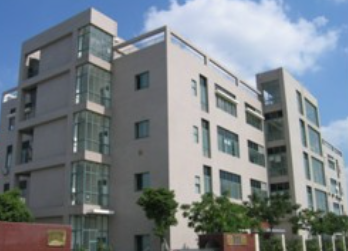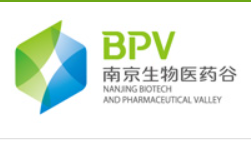氨基化合物的氧化
直接将伯胺氧化成相应的硝基化合物,是工业制备脂肪族硝基化合物应用最广泛的方法。因为,它能够提供应用直接硝化方法难以得到的硝化物。本节介绍了一些将伯胺转化成硝基化合物的合成方法。
饱和的伯胺通过臭氧氧化转化成硝基化合物,或者根据反应条件不同得到其他一些化合物。1臭氧化的方法操作上存在一定缺点,但是可以通过负载在硅胶上克服他的缺点。操作如下:

Amines are absorbed on the silica gel by mixing with dry silica gel (dried for 24 h at 450°C). The silica gel (ca 30 g) containing the amine (0.1-0.2 wt/wt%) was cooled to -78°C and a stream of 3% of ozone inoxygen passed through it. By this procedure, nitro compounds are obtained in 60-70% yield 2. 1-Nitroadamantane is prepared by oxidation of 1-aminoadamantane with peracetic acid and ozone in 95% yield. 3
非均相的催化体系与均相催化体系相比有很多优点,比如催化剂的回收利用以及产物的后处理更加便捷。如催化剂chromium-containingmedium-pore molecular sieve (Si:Cr > 140:1), CrS-2和70% t-butylhydroperoxide(TBHP)都能够有效地催化和提高各种伯胺氧化成硝基化合物的反应。4
二甲基双环氧乙烷可以将脂肪和芳香伯胺氧化成相应的硝基化合物5(二甲基双环氧乙烷可以通过OXONE跟丙酮的缓冲溶剂制备得到6)

n-butylamine (0.052 g, 0.7 mmol) in 5 ml of acetone is treated with 95 ml of dimethyldioxirane in acetone solution (0.05 M). The solution is kept at room temperature for 30 min with the exclusion of light.5
将胺氧化成硝基化合物通常用过氧酸,如,过氧乙酸或者过氧三氟乙酸等。但是,这些过氧酸具有一定的毒害性比较难于处置,这使得这些方法少有关注。Gilbert发明一个新方法改进了以上的不足,他用m-CPBA在加热的情况下将胺转化成硝基7。该方法简单实用,便于操作而且收率很高的合成硝基化合物的方。一个简单的例子,2-氨基糖被m-CPBA氧化成饱和2-硝基糖衍生物8

A solution of 1,3,4,6-tetra-O-acetyl-2-amino-2-deoxy-β-D-glucopyranose (1 mmol) in CHCl3(20 mL) and solid Na2SO4 (2 g) was heated under reflux with stirring, and m-CPBA (Aldrich 57-86%) (2 g) was added. The suspension was stirred until completion of the reaction (TLC) (1-2 h). It was then left to cool to room temperature and diluted with CH2Cl2. The organic phase was washed successively with 0.1 M aqueous Na2CO3 and water, then dried (Na2SO4), and concentrated to give a crude product (essentially desired compound): yield 85%.8
叔胺也能通过氧化的方法转化成相应的硝基化合物。例如,2-甲基-2-硝基丙烷就是通过KMnO4氧化叔丁胺制备得到的,收率为84%9。

To a well-stirred suspension of 650 g (4.11 mol) of potassium permanganate in 3 L of water, contained in a 5-L, three-necked flask fitted with a reflux condenser, a mechanical stirrer, a thermometer, and a 250-mL dropping funnel, is added, dropwise and with stirring over a 10- minute period,100 g. (1.37 mol) of tert-butylamine. When the addition is complete, the reaction mixture is heated to 55°C over a period of approximately 2 hours, and maintained at 55°C with continuous stirring for 3 hours. The dropping funnel and reflux condenser are replaced with a stopper and a still head fitted for steam distillation, and the product is steam distilled from the reactionmixture. The liquid product is separated from the denser water layer, diluted with 250 mL of diethyl ether, and washed successively with two 50-mL portions of 2 M hydrochloric acid and 50 ml. of water. After the ethereal solution has been dried over anhydrous magnesium sulfate, the solution is fractionally distilled at atmospheric pressure, removing the ether. The residual crude product totals 106–128 g. and is sufficiently pure for use in the next step. Ina typical run, distillation of 124 g of the crude product affords 110 g (78%) of the pure 2-methyl-2-nitropropane as a colorless liquid.9
现在,有方法将伯胺通过Zr-tBOOH体系催化氧化成硝基化合物收率可以达到50-98%10

A solution of the amine (10.0 mmol) in dry CH2Cl2(20 mL) was treated successively with freshly activated powdered molecular sieves (3 Å, 1.5 g) and Zr(O t-Bu)4 (0.4 mL, 1.0 mmol). After stirring for 30 min, a solution of TBHP in CH2Cl2 (c =3.66 mol/L, 16.0 mL, 59 mmol) was added within 2-5 min. After complete consumption of the starting material (GC control, 1.5 h) the reaction was quenched by addition of water (10-20 mL). The mixture was filtered and the molecular sieves washed carefully with CH2Cl2 (50 mL).The organic phase was stirred overnight in presence of a Na2SO3 solution (5%, 50 mL) to reduce the excessive TBHP. The organic phase wasseparated, dried (Na2SO4) and purified by column chromatography on silica gel followed by bulb-tobulb destillation to give nitrocompound with 70% yield. 10
【参考文献】
1. Bailey, P. S., and J. E. Keller. J. Org. Chem. 33, 2680 (1968).
2. Keinan, E., and Y. Mazur. J. Org Chem. 42, 844 (1977).
3. Zajac, W. W., Jr., T. R. Walters, and J. M.Woods. J. Org. Chem., 54, 2468 (1989).
4. Jayachandran, B., M. Sasidharan, A. Sudalai,and T. Ravindranathan. J. Chem. Soc.,Chem.
Commun., 1523 (1995).
5. Murray, R. W., R. Jeyaraman, and L. Mohan. Tetrahedron Lett., 27, 2335 (1986).
6. Murray, R. W., and R. Jeyaraman. J. Org. Chem., 50, 2847 (1985).
7. Gilbert, K. E., and W. T. Borden. J. Org. Chem., 44, 659 (1973).
8. Vega-Perez, J. M., J. I. Candela, and F.Iglesias-Guerra. J. Org. Chem., 62,6606 (1997).
9. Calder, A., A. R Forrester, and S. P. Hepburn. Org. Synth., Coll. Vol. 6, 803 (1988).
10. Krohn, K., and J. Kupke. Eur. J. Org. Chem., 679 (1998).
11.定制合成







